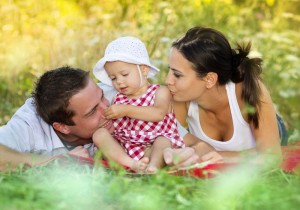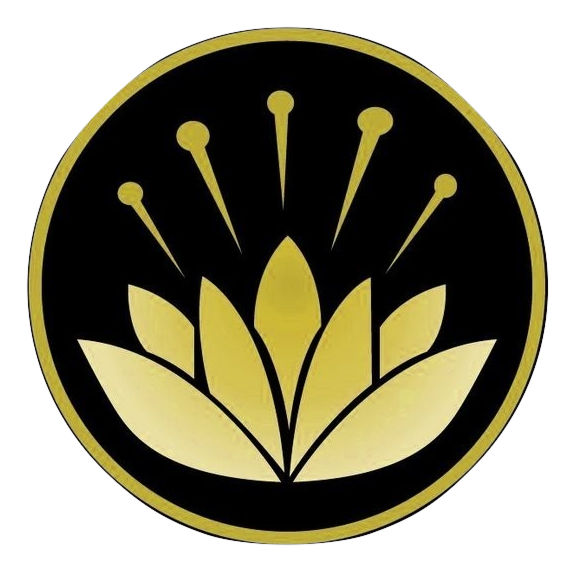 Traditional Chinese medicine can offer time tested and clinically proven assistance to those individuals seeking help for fertility related issues.
Traditional Chinese medicine can offer time tested and clinically proven assistance to those individuals seeking help for fertility related issues.
Individuals might choose to pursue TCM as a supplementary component of medical interventions such as IVF and IUI or as a stand-alone and natural therapy.
Fertility related difficulties might result from a variety of conditions affecting the health of both women and men such as:
- Polycystic ovary syndrome
- Uterine or cervical abnormalities
- Fallopian tube damage or blockage
- Hormonal imbalances
- Ovarian insufficiency
- Endometriosis
- Ovarian cysts
- Sperm related factors
- Oocyte related factors
These disorders might be addressed medically through the use of pharmaceutical medications, surgery, assisted reproductive therapies (ARTs) or a combination of such treatments.
Roughly 16% (or 1 in 6) couples in Canada experience infertility. It has been estimated that approximately one third of infertility cases result from disorders affecting the female partner, another third from disorders affecting the male partner and that in the remainder of cases, a mix of male and female reproductive issues or problems of an unknown nature are involved.1
According to another estimate, unexplained reasons alone affect between 15-30% of couples experiencing infertility.2
Traditional Chinese medicine views infertility as the symptom of an underlying systemic imbalance. Such imbalances generally fall within 3 categories of classification: deficiency, stagnancy, or heat related syndromes. Very loosely, these categories might be thought of as corresponding to such physiological conditions as hormonal insufficiencies, functional disruptions of the reproductive organs, or inflammatory processes, respectively.
TCM treatment begins with a thorough health assessment of both partners which could include a review of any test results obtained through consultations with other health care professionals and, after diagnosis, proceeds to various TCM based treatment methods such as, but not limited to, acupuncture, herbal prescriptions and/or dietary therapy.
Typically, those individuals who seek TCM fertility treatments fall within three categories: those involved in concurrent medical interventions, those seeking exclusively natural solutions and those who have previously attempted conventional medical interventions without success.
 Wherever possible, and under ideal circumstances, therapy is provided in two stages.
Wherever possible, and under ideal circumstances, therapy is provided in two stages.
In the first stage treatment is aimed at optimizing general health, increasing blood supply to the reproductive organs, improving the lining of the uterus, improving egg and sperm production/quality, reducing stress and preparing the body for any ART procedures that might be forthcoming.
This phase of care can last for up to 3 months and usually involves weekly acupuncture sessions along with the consumption of herbs. The longer a couple has experienced infertility issues and the older the individuals involved, the longer the time period over which therapy is recommended.
During the second phase of treatment, the use of acupuncture and herbs might be timed for optimal effect with any ART procedures that may be applicable. For example, research has identified advantageous periods during which the coordination of TCM methods and the embryo transfer of IVF may be most effective.3,4
For those patients not utilizing ART techniques, treatment in this stage is undertaken during that period in which a couple actively makes their attempts to conceive.
The focus is on supporting embryonic development, reducing the symptoms of morning sickness in the mother and reducing the potential for miscarriage.
In this stage, therapy could last for up to three months and also involve the use of weekly acupuncture sessions and herbal prescriptions.
It should be noted that the beneficial effects of acupuncture and TCM are cumulative in nature. By allowing for the full course of recommended treatments, the chances of achieving a healthy and full term pregnancy are maximized.
 Once a pregnancy has progressed past the third month, research has proven that acupuncture and TCM can continue to offer safe, effective and natural treatments for such mid to late gestational issues as low back pain,5 breech presentation 6,7 and depression.8
Once a pregnancy has progressed past the third month, research has proven that acupuncture and TCM can continue to offer safe, effective and natural treatments for such mid to late gestational issues as low back pain,5 breech presentation 6,7 and depression.8
Various research studies have demonstrated the efficacy of TCM methods in dealing with the factors that affect fertility both as an adjuvant therapy to ART procedures,3,4,9 particularly in the case of those with a poor prognosis,10 and as a stand-alone intervention.11,12
It is believed that acupuncture may improve ovulation through its ability to modulate the central and peripheral nervous systems, the neuroendocrine and endocrine systems, ovarian blood flow and metabolism.13,14,15 It can also increase uterine blood flow, inhibit uterine motility, and relieve depression, anxiety and stress.13
Repeated studies have also demonstrated its ability to address issues related to male infertility.16,17,18
TCM and acupuncture can offer a safe, effective and natural alternative therapy solution for the treatment of infertility.
________________________________________________________________
For fertility related support resources, please visit:
Sources:
1 Infertility Fact Sheet. Womenshealth.gov 2016. Web. 01/02/2016
2 Quaas, A. & Dokras, A.”Diagnosis and Treatment of Unexplained Infertility.” Rev Obstet Gynecol. 2008. Web. 02/02/2016
3 Paulus W.E. et al. “Influence of acupuncture on the pregnancy rate in patients who undergo assisted reproduction therapy.” Fertil Steril. 2002. Web. 01/02/2016
4 Westergaard L.G. et al. “Acupuncture on the day of embryo transfer significantly improves the reproductive outcome in infertile women: a prospective, randomized trial.” Fertil Steril. 2006. Web. 02/02/2016
5 Kvorning, N. et al. “Acupuncture relieves pelvic and low-back pain in late pregnancy.” Acta Obstet Gynecol Scand. 2004. Web. 04/02/2016
6 Neri, I. et al. “Acupuncture plus moxibustion to resolve breech presentation: a randomized controlled study.” J Matern Fetal Neonatal Med. 2004. Web. 01/02/2016
7 Cardini, F. & Weixin, H. “Moxibustion for Correction of Breech Presentation. A Randomized Controlled Trial.” JAMA. 1998. Web. 01/05/2016
8 Manber, R. et al. “Acupuncture for Depression During Pregnancy: A Randomized Controlled Trial.” Obstetrics & Gynecology. 2010. Web. 16/02/2016
9 Rubin, L.H. et al. “Impact of whole systems traditional Chinese medicine on in-vitro fertilization outcomes.” Reprod Biomed Online. 2015. Web. 16/01/2016
10 Magarelli, P.C. et al. “Acupuncture & IVF Poor Responders: A Cure?” Reproductive Medicine & Fertility Center, ColoradoSprings, CO. 2004. Web. 16/01/2016
11 Ried, K. & Stuart, K. “Efficacy of Traditional Chinese Herbal Medicine in the management of female infertility: a systematic review.” Complement Ther Med. 2011 Web. 17/01/2016
12 Ried, K. “Chinese herbal medicine for female infertility: an updated meta-analysis.” Complement Ther Med. 2015. Web. 17/01/2016
13 Huang, D.M. et al. “Acupuncture for infertility: is it an effective therapy?” Chin J Integr Med. 2011. Web. 02/02/2016
14 Stener-Victorin E. & Wu, X. “Effects and mechanisms of acupuncture in the reproductive system.” Auton Neurosci. 2010. Web. 02/02/2016
15 Magarelli, P.C. et al. “Changes in serum cortisol and prolactin associated with acupuncture during controlled ovarian hyperstimulation in women undergoing in vitro fertilization–embryo transfer treatment.” Fertility and Sterility. 2009. Web. 12/02/2016
16 Siterman, S. et al. “Effect of acupuncture on sperm parameters of males suffering from subfertility related to low sperm quality.” Arch Androl. 1997.Web. 17/01/2016
17 Dong, C. et al. “Clinical observation and study of mechanisms of needle-picking therapy for primary infertility of abnormal sperm.” Zhen Jiu. 2006. Web. 12/02/2016
18 Fu, B. et al. “Effects of the combined therapy of acupuncture with herbal drugs on male immune infertility–a clinical report of 50 cases.” J Tradit Chin Med. 2005. Web. 15/02/2016






